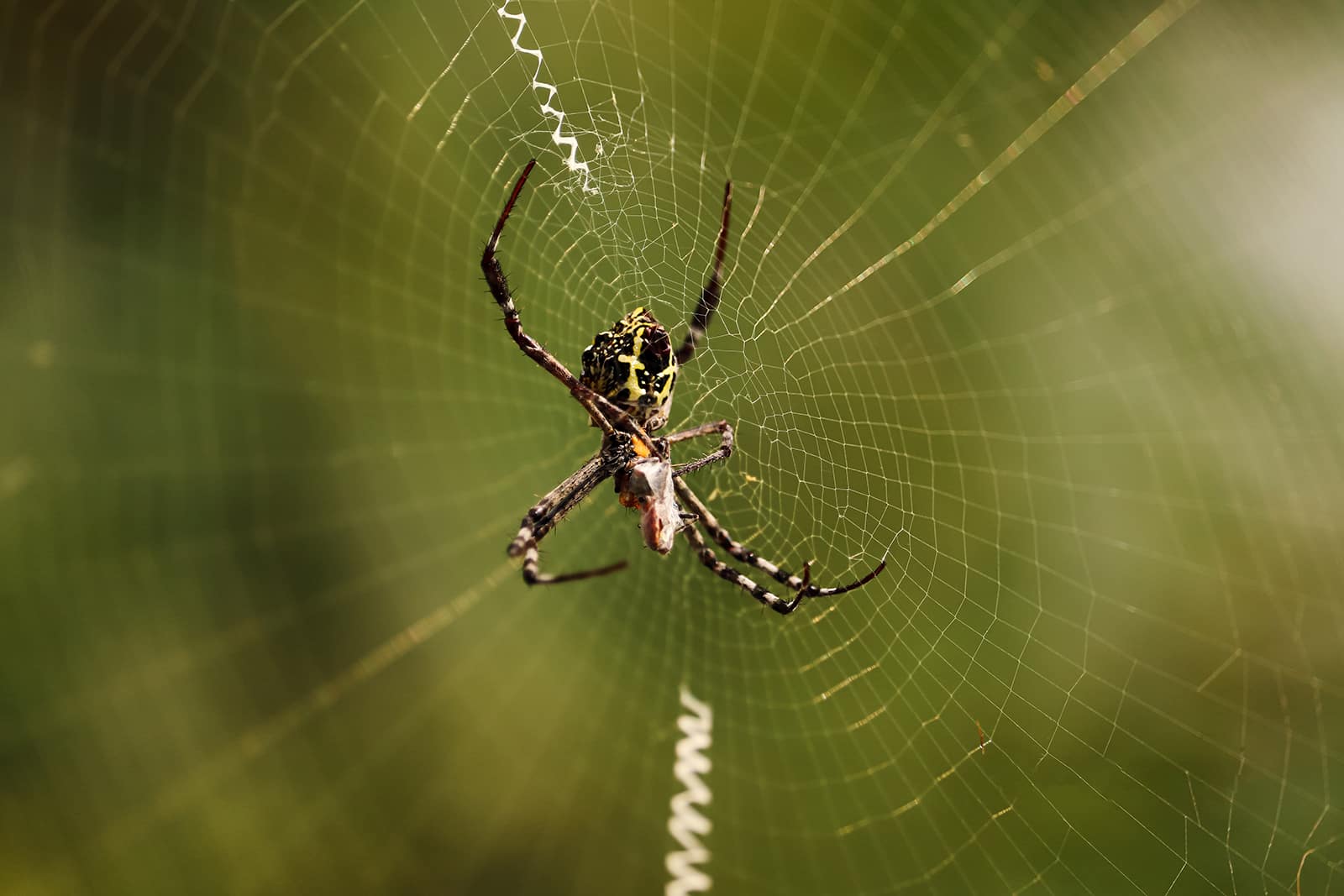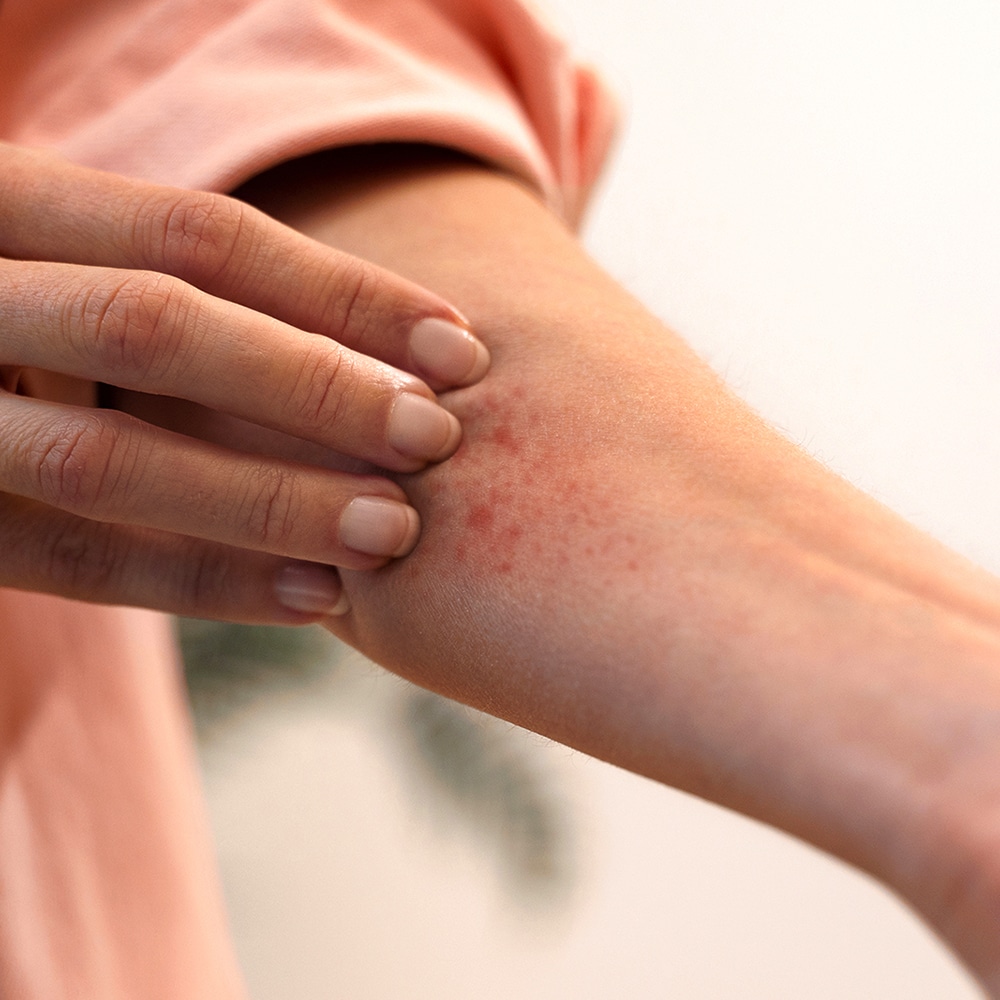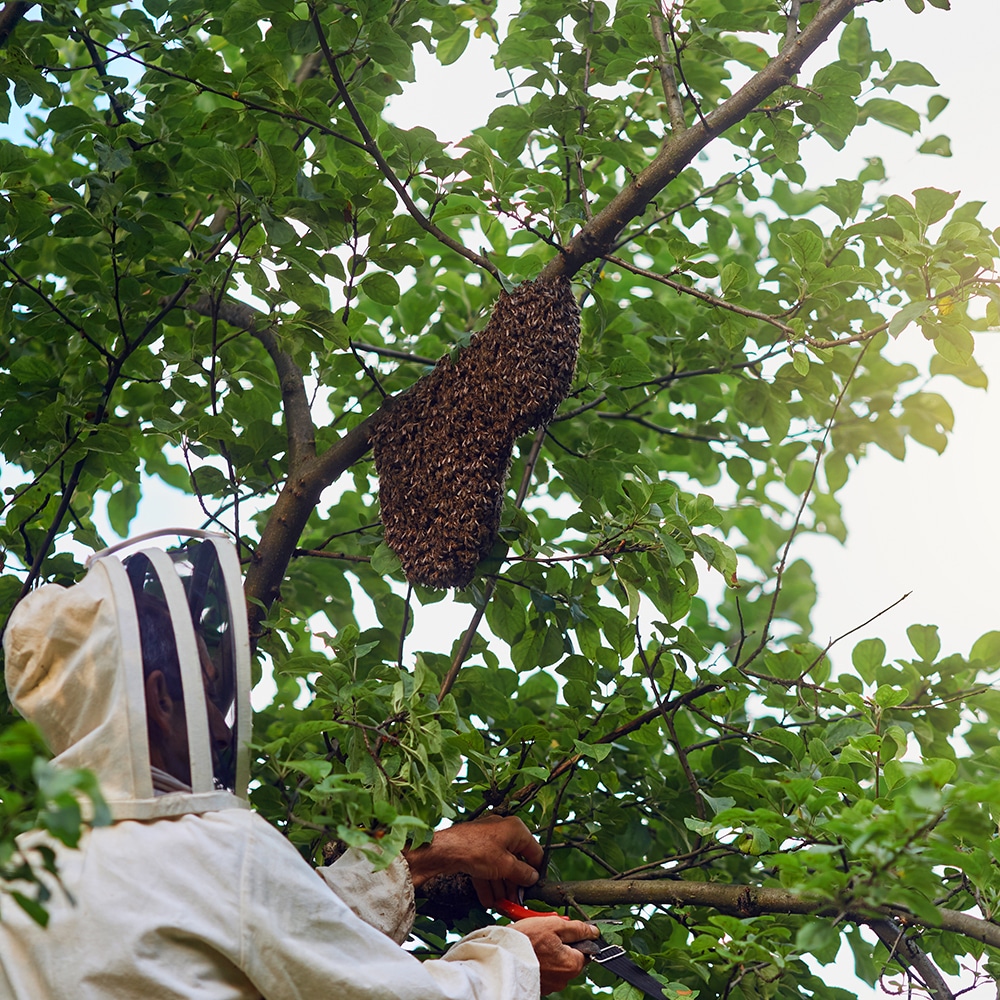
Why Do Spiders Come Back And Why
Why Do Spiders Come Back And Why On The Central Coast NSW. Responsive Proactive Solutions. Detail-focused for lasting results. Call Adam on 0431 222 894
When it comes to “Common Allergic Reactions From Household Pests”, understanding the triggers is key. On the Central Coast NSW, Vital Pest Control offers solutions to tackle these pesky problems effectively. Let’s explore how you can identify and manage these reactions at home.
Identifying Mild vs Severe Symptoms
Knowing the difference saves time and stress. Mild symptoms might include sneezing or itching. Severe reactions could involve difficulty breathing or swelling. Spotting these early helps in taking swift action.
Understanding Allergens in Droppings
Pest droppings release allergens into the air. Cockroaches and rodents are common culprits. Regular cleaning can minimise exposure, ensuring a healthier environment.
Recognising Respiratory Triggers
Household pests can trigger asthma and respiratory issues. Dust mites and cockroaches are often responsible. Keep living spaces ventilated to reduce risk.
Histamine Release in Insect Stings
Insect stings cause histamine release, leading to swelling or itching. Bees and wasps are frequent offenders. Quick use of ice and antihistamines can ease discomfort.
Swelling or Redness Patterns
Swelling or redness indicates an allergic reaction. Observe patterns to determine severity. Immediate care can prevent escalation.
Over the Counter Antihistamines
Antihistamines can relieve mild allergic reactions. They are easily accessible and work quickly. Consult a pharmacist for the best options.
When to Seek Professional Medical Help
Seek help if symptoms worsen or breathing is affected. Medical professionals provide reliable and trustworthy advice. Don’t hesitate in emergencies.
Reducing Exposure with Cleaning Methods
Regular, thorough cleaning reduces allergen exposure. Vacuum carpets and dust surfaces often. Vital Pest Control recommends these quality over quantity methods.
Discover how we can help you today! Visit our Contact page to learn more.

Living on the Central Coast of NSW, households often face the challenge of dealing with pests. These unwelcome guests can trigger allergic reactions with varying degrees of severity. Knowing how to identify mild versus severe symptoms can help in deciding whether professional pest control services are needed. Rapid identification can prevent complications, ensuring your home remains a safe haven.
Mild Symptoms
Mild symptoms from pest allergens typically include sneezing, runny nose, or watery eyes. These signs can easily be mistaken for seasonal allergies and might not seem alarming. However, persistent irritation can indicate a growing pest problem. It is essential to monitor these symptoms, especially if they occur suddenly or without a clear cause. Addressing these early signs can prevent further discomfort and health issues.
Severe Symptoms
Severe allergic reactions require immediate attention. Symptoms like difficulty breathing, swelling, or rashes may suggest a more serious issue. These reactions can stem from prolonged exposure to pests like cockroaches or dust mites. If someone in your household experiences such symptoms, consider seeking medical advice and contacting a pest control expert. Timely intervention can safeguard your family’s health and well-being.
Understanding allergens in droppings is crucial for maintaining a healthy home environment, especially on the Central Coast of NSW. Household pests, like rodents and cockroaches, leave behind droppings that can trigger allergic reactions. These allergens are not only a nuisance but also pose health risks to you and your family.
Identifying Common Allergens
Rodent droppings are a major source of allergens. These tiny pellets often contain proteins that can irritate sensitive individuals. When these proteins become airborne, they can trigger asthma and other respiratory issues. Cockroach droppings also carry potent allergens. Their faeces, along with shed skin, can exacerbate allergic responses, particularly in children.
Allergen Exposure Risks
Exposure to allergens in droppings often occurs during cleaning. Sweeping or vacuuming can easily disturb dried droppings, releasing allergens into the air. Without proper precautions, this can lead to inhalation and subsequent allergic reactions. Skin contact may also occur, further increasing the risk of symptoms like itching or rashes.
Prevention and Control
Effective pest control is key to reducing allergen exposure. Regular cleaning and maintenance help minimise droppings. Sealing entry points and removing food sources deters pests from entering your home. Hiring a professional pest control service ensures thorough inspection and treatment, maintaining a safe, allergen-free environment for your family.
Understanding the respiratory triggers related to household pests is crucial for maintaining healthy living spaces, especially on the Central Coast of NSW. Many pests can cause allergic reactions, impacting the respiratory system. Identifying these triggers is key to effective pest control and improving air quality in homes.
Dust Mite Presence
Dust mites thrive in warm, humid environments, making them common on coastal areas. They feed on dead skin cells and often reside in bedding and upholstered furniture. Their droppings and body fragments can become airborne, triggering asthma and other respiratory issues. Regular cleaning and using mite-proof covers can help manage their presence.
Cockroach Infestation
Cockroaches are more than just unwelcome guests; their saliva, droppings, and decomposing bodies release allergens. These particles can linger in the air and exacerbate asthma symptoms or cause respiratory problems. Effective pest control measures and maintaining a clean kitchen can reduce cockroach infestations.
Rodent Residue
Rodents, such as rats and mice, can also trigger respiratory issues. Their droppings and urine can become airborne, leading to allergic reactions. Identifying entry points and sealing them is crucial in preventing rodent infestations. Proper sanitation and removing food sources can further deter these pests.
Recognising these respiratory triggers helps in implementing targeted pest control strategies. Addressing them promptly ensures a healthier, allergen-free home environment on the Central Coast.
When insects like wasps or bees sting, they inject venom into the skin. This venom contains proteins that trigger an immune response, causing histamine release. Histamine plays a key role in allergic reactions, leading to redness, swelling, and itching around the sting site. For residents on the Central Coast of NSW, understanding this process is vital for managing and preventing allergic reactions effectively.
How Histamine Triggers Reactions
Histamine’s release from mast cells in the skin is a natural defence mechanism. When insect venom enters the body, it binds to these cells, prompting them to release histamine. This chemical increases blood flow and attracts white blood cells to the sting site, causing inflammation and irritation. These symptoms are the body’s way of isolating and dealing with the perceived threat.
Identifying Histamine-Related Symptoms
Common reactions to histamine release include itching, swelling, and redness. In more severe cases, individuals might experience hives or difficulty breathing, indicating a potential allergic reaction requiring medical attention. Being aware of these symptoms helps in early identification and treatment, crucial for those with known allergies or sensitivities.
Prevention and Control Measures
Preventing insect stings involves practical steps like avoiding bright clothing and using insect repellents. For those on the Central Coast, regular pest control services can significantly reduce the risk of stings. Vital Pest Control offers tailored solutions to keep your home insect-free, minimising the chances of histamine-related allergic reactions.
Living on the Central Coast in NSW, household pests are more than just a nuisance. They can cause allergic reactions, often marked by swelling and redness. Understanding these reactions is key to effective pest control. Vital Pest Control aims to educate residents about these common symptoms to ensure a healthier living environment.
Identifying Swelling Patterns
Swelling usually appears around the site of a pest bite or sting. This can be a tell-tale sign of an allergic reaction. On the Central Coast, ants, mosquitoes, and spiders are common culprits. The swelling might be immediate or develop over a few hours, and the size can vary significantly. Recognising these patterns helps in determining the pest involved, allowing for targeted control measures.
Recognising Redness
Redness often accompanies swelling and can indicate inflammation. This reaction is a natural response to irritants introduced by pests. In some cases, the redness spreads beyond the initial bite area, signalling a more severe reaction. Monitoring the progression of redness is crucial in assessing the need for medical attention or intervention.
Prevention and Control
To minimise allergic reactions, effective pest control is essential. Vital Pest Control offers solutions tailored to the Central Coast’s unique pest challenges. Regular inspections and treatments can significantly reduce the risk of pest-related allergies. By understanding these swelling and redness patterns, residents can take proactive steps to protect their families.
Dealing with household pests on the Central Coast can be more than just a nuisance. Many people experience allergic reactions due to exposure to these pests. Antihistamines, available over the counter, offer a convenient way to manage these reactions. Understanding how these medications work can help you make informed decisions for your pest control strategy.
How Antihistamines Work
Antihistamines block the effects of histamine, a chemical released by the immune system during an allergic reaction. When pests trigger these reactions, symptoms like itching, sneezing, and swelling often occur. By taking antihistamines, you can alleviate these symptoms, allowing for a more comfortable living environment.
Types of Antihistamines
There are two main types of antihistamines: sedating and non-sedating. Sedating antihistamines, like diphenhydramine, may cause drowsiness but are effective for quick relief. Non-sedating options, such as loratadine, provide symptom relief without making you sleepy, making them suitable for daytime use.
Choosing the Right Antihistamine
When selecting an antihistamine, consider factors like symptom severity and lifestyle. For minor reactions, non-sedating antihistamines are often sufficient. However, if symptoms are severe, you might opt for a sedating option. Consulting with a pharmacist can also guide you to the best choice for your needs.
Allergic reactions from household pests can disrupt daily life and pose health risks. On the Central Coast NSW, seeking timely professional medical help is crucial for managing these reactions effectively. Understanding when to contact a healthcare professional can make a significant difference in recovery and overall wellbeing.
Severe Allergic Reactions
If you or a loved one experiences difficulty breathing, swelling of the face or throat, or dizziness after exposure to pests, seek immediate medical attention. These symptoms might indicate anaphylaxis, a severe and potentially life-threatening allergic reaction that requires urgent treatment.
Persistent Symptoms
When allergic symptoms like itching, redness, or a runny nose persist despite over-the-counter treatments, it may be time to consult a doctor. Persistent symptoms can indicate a need for prescription medication or further investigation into the triggers and allergens involved.
Recurring Reactions
If allergic reactions occur repeatedly, especially in response to common pests such as dust mites, cockroaches, or bed bugs, a visit to a healthcare professional is advisable. They can help identify specific allergens and recommend effective management strategies, possibly involving vital pest control measures.
Unusual Symptoms
Experiencing unusual symptoms like rashes, fever, or fatigue after pest exposure may warrant professional medical advice. These could signal an underlying condition that requires attention beyond standard allergic responses, ensuring comprehensive care and recovery.
Dealing with household pests on the Central Coast NSW can trigger allergic reactions. To protect your home and reduce exposure, adopting effective cleaning methods is crucial. Ensuring your home is free from irritants can greatly decrease the chance of allergies flaring up.
Regular Dusting and Vacuuming
Dust mites thrive in dusty environments. Regular dusting and vacuuming can help control these pesky intruders. Focus on areas where dust collects, like carpets, curtains, and upholstery. Use a vacuum with a HEPA filter to trap mites and other allergens effectively. This approach reduces the presence of allergens and helps maintain a cleaner environment.
Steam Cleaning
Steam cleaning is a powerful method to eliminate pests without harsh chemicals. High-temperature steam kills dust mites, bed bugs, and their eggs. It’s particularly effective for mattresses, carpets, and fabric furniture. Regular steam cleaning can drastically cut down allergen levels and provide a healthier indoor space.
Sealing Entry Points
Prevent pests from entering your home by sealing gaps and cracks. Inspect window frames, doorways, and plumbing fixtures. Use caulk or weather stripping to close these entry points. This simple step can keep pests out and reduce the need for using chemicals inside your home.
Protecting children and the elderly from pests is crucial on the Central Coast NSW, where household pests can trigger allergic reactions. Understanding how to shield these vulnerable groups is essential for a safe home environment.
Child-Safe Pest Control
Kids are naturally curious and often explore their surroundings by touching and tasting. This behaviour puts them at risk of encountering pests and the chemicals used to control them. Opt for non-toxic pest control methods like traps and natural repellents. Keep all pest control products out of reach to prevent accidental contact. Regularly clean play areas and store food securely to minimise pest attraction. Educate children about the dangers of pests and the importance of hygiene.
Elderly Protection Strategies
The elderly may have weakened immune systems, making them more susceptible to pest-related allergies and infections. Conduct regular inspections to identify pest entry points and seal them promptly. Use environmentally friendly pest control options to reduce chemical exposure. Ensure that living spaces are well-ventilated and clean to deter pest infestations. Encourage seniors to report any signs of pests immediately to address issues before they escalate.
Community Support and Resources
Engaging with local pest control services that understand the unique challenges of the Central Coast NSW can provide tailored solutions for families. Many services offer family-friendly pest management plans. Joining community forums can also provide tips and shared experiences on managing pests safely. Stay informed about the latest pest control innovations to ensure the safety of both kids and the elderly.
Dealing with household pests can lead to unwanted allergic reactions, making effective pest control vital. On the Central Coast of NSW, safely disposing of pest debris is crucial to prevent further health issues. Proper disposal not only ensures a cleaner environment but also reduces the risk of allergies flaring up due to lingering pest remnants.
Understanding Pest Debris
Pest debris includes droppings, shed skins, and dead insects, all of which can trigger allergies. These remnants often harbour allergens that can exacerbate respiratory issues. Recognising the types of debris left by common pests is the first step in ensuring safe disposal.
Safe Collection Methods
When collecting pest debris, use protective gear like gloves and masks to avoid direct contact. Use disposable materials like paper towels or single-use wipes to gather debris. This approach minimises the risk of allergen exposure during the cleanup process.
Appropriate Disposal Techniques
Once collected, seal pest debris in airtight bags to contain allergens. Dispose of these bags in outdoor bins immediately. This technique prevents allergen circulation indoors and reduces the chance of allergic reactions.
Cleaning and Sanitising Affected Areas
After disposal, clean and sanitise affected areas thoroughly. Use appropriate cleaning agents to eliminate any remaining allergens. This step is essential in maintaining a healthy living space free from potential triggers.
Carpets and upholstery can harbour allergens, especially in regions like the Central Coast NSW where pests are prevalent. Proper cleaning methods not only maintain appearances but also enhance health by reducing allergic reactions. Here’s how thorough cleaning plays a crucial role in pest control and allergy reduction.
Effective Vacuuming Techniques
Regular vacuuming is essential. However, the technique matters. Use a vacuum with a HEPA filter to capture tiny particles often missed by regular vacuums. Move the vacuum slowly over the carpet to allow it to lift embedded dirt and allergens effectively. Pay special attention to high-traffic areas where allergens accumulate more.
Deep Cleaning with Steam
Steam cleaning reaches deep into carpet fibres, killing dust mites and other pests. High temperatures break down dirt and allergens that cause reactions. For upholstery, ensure the fabric can withstand steam to avoid damage. This method not only refreshes the look but also effectively reduces allergens.
Using Eco-Friendly Cleaning Products
Choosing eco-friendly cleaning products helps minimise chemical exposure while effectively removing allergens. These products are safer for homes with children and pets. They prevent the introduction of harsh chemicals into the environment, keeping your living space healthier and cleaner.
On the Central Coast of NSW, dealing with household pests can trigger a range of allergic reactions. While common methods focus on extermination, air purifiers offer a unique approach to pest control, improving indoor air quality and reducing allergens. These devices can play a crucial role in managing allergy symptoms caused by pests like dust mites, cockroaches, and rodents.
Reducing Airborne Allergens
Air purifiers work by trapping airborne particles, including those from pests. Dust mites and cockroaches often leave behind allergens that float in the air. By using a purifier with a HEPA filter, you can capture these tiny particles, thus decreasing the chance of allergic reactions. This is particularly beneficial for those with asthma or allergies, as clean air can ease breathing difficulties.
Minimising Pest Odours
Some air purifiers also feature activated carbon filters, which absorb odours from pests. Cockroaches and rodents can leave unpleasant smells around the home. An air purifier helps neutralise these odours, creating a fresher atmosphere. This can make your living space more comfortable and less inviting to pests.
Complementing Other Pest Control Methods
While air purifiers effectively reduce allergens, they should complement other pest control strategies. Regular cleaning, sealing entry points, and using traps or professional services are essential for comprehensive pest management. Together, these methods, along with air purification, can significantly improve your home’s air quality and reduce pest-related allergies.
Understanding the connection between household pests and allergic reactions is essential for maintaining a comfortable home environment on the Central Coast, NSW. Documenting allergen triggers from these pests can help in identifying the culprits and taking effective action. Vital Pest Control provides insights into managing these issues efficiently.
Identifying Common Pests
Common household pests such as cockroaches, dust mites, and rodents often trigger allergic reactions. Recognising which pests are present in your home is the first step towards documenting allergen triggers. Look for signs like droppings, nests, or body parts to pinpoint the pests causing discomfort. This identification allows for targeted pest control strategies.
Tracking Allergy Symptoms
Recording allergy symptoms can provide valuable insights into which pests might be the cause. Symptoms such as sneezing, itchy eyes, or skin rashes can vary depending on the pest. Keeping a detailed log of these reactions, noting the time and location of each occurrence, helps in correlating symptoms with specific pests.
Utilising Professional Assessments
Engaging experts from Vital Pest Control can enhance the accuracy of allergen documentation. Professionals conduct thorough assessments, using advanced techniques to identify hidden pest problems. Their expertise ensures a comprehensive understanding of the triggers, enabling the development of an effective pest management plan for your home.
Living on the Central Coast NSW offers a picturesque lifestyle, but it also comes with its fair share of challenges, including dealing with household pests. These pests can trigger allergic reactions, making it vital to consult allergy specialists for proper pest control. Understanding the connection between pests and allergies is crucial for maintaining a healthy home environment.
Understanding Pests and Allergies
Allergy specialists highlight the impact pests like cockroaches, dust mites, and rodents have on allergies. These pests can carry allergens that exacerbate respiratory issues such as asthma. Consulting specialists can help identify specific allergens and offer solutions tailored to your needs, reducing health risks and improving air quality.
Personalised Allergy Management
Allergy specialists can provide personalised advice, taking into account your unique allergy profile. They can recommend effective pest control strategies that minimise exposure to allergens. This bespoke approach ensures that pest control measures are both safe and efficient, protecting your family’s health while addressing the pest problem.
Integrated Pest Management Solutions
Consulting with allergy specialists also means gaining access to integrated pest management solutions. These solutions focus on long-term prevention rather than just immediate eradication. By understanding pest behaviour and habitats, allergy specialists can propose environmentally friendly and sustainable pest control methods.
Keeping your living spaces free of pests on the Central Coast NSW is essential for a healthy home. Pests like dust mites, cockroaches, and rodents can trigger allergic reactions, making it vital to maintain a pest-free environment. Here are some effective strategies to ensure your home remains a safe haven from these unwelcome guests.
Regular Cleaning and Decluttering
Dust and clutter provide the perfect environment for pests to thrive. Regularly cleaning surfaces, vacuuming carpets, and decluttering your home can significantly reduce the chances of pest infestations. Pay special attention to kitchens and bathrooms, where crumbs and moisture can attract pests.
Sealing Entry Points
Pests often enter homes through small cracks and openings. Inspect your home for any gaps around windows, doors, and utility pipes. Sealing these entry points with caulk or weather stripping can prevent pests from invading your living space, helping to maintain a pest-free environment.
Proper Food Storage
Storing food in airtight containers is crucial in keeping pests at bay. Ensure that all pantry items are sealed, and avoid leaving food out overnight. Regularly check your pantry for expired items, as pests are drawn to decaying food. Proper food storage helps minimise pest attraction.
Please leave your details in the form and we will call you back the same day.
So that we can process your enquire efficiently please leave as many details as possible and upload any relevant images. (.jpg and .png format)

Why Do Spiders Come Back And Why On The Central Coast NSW. Responsive Proactive Solutions. Detail-focused for lasting results. Call Adam on 0431 222 894

Building a Long Term Residential Pest Protection Plan For Home Owners On The Central Coast NSW. Responsive Proactive Solutions. Detail-focused for lasting results. Call Adam on 0431 222 894

How to Protect Your Home from Wasp Infestations On The Central Coast NSW. Responsive Proactive Solutions. Detail-focused for lasting results. Call Adam on 0431 222 894